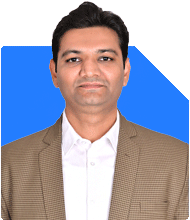Monthly income of ?2 lakh, expecting a baby in 2025 - How to diversify mutual fund investments?
Ramalingam Kalirajan |8940 Answers |Ask -Follow
Mutual Funds, Financial Planning Expert - Answered on Jan 16, 2025
He has an MBA in finance from the University of Madras and is a certified financial planner.
He is the director and chief financial planner at Holistic Investment, a Chennai-based firm that offers financial planning and wealth management advice.... more

I have a monthly salary of around ?2 lakh and want to invest ?30,000-?40,000 in mutual funds. With the expectation of a baby in 2025, how should I diversify my mutual fund investments? Could you provide some examples of diversified mutual fund portfolios and suggest some child savings mutual funds?
Key Considerations for Diversifying Your Mutual Fund Portfolio
Investment Horizon: Since you’re planning for a baby and your child’s future needs, you have a long-term investment horizon, potentially spanning 10-15 years. This enables you to take on some amount of risk for higher growth.
Risk Tolerance: Given your relatively young age and growing family, you may have a moderate to high-risk tolerance. It’s essential to balance growth with stability, especially as you near the time for expenses related to your child's education or other needs.
Liquidity Needs: You may need to access your investments for short-term goals, such as your child’s immediate needs or emergencies. Therefore, including a mix of liquid funds and longer-term investments is important.
Diversification Strategy
Equity Funds: These funds primarily invest in the stock market, offering high potential for growth over the long term. Given your horizon, equity funds should form a significant portion of your portfolio, especially for your child’s future needs.
Debt Funds: Debt funds invest in fixed-income securities, providing stability and reducing overall risk. They are ideal for preserving capital and managing interest rate risk. Debt funds should form a smaller but significant portion to balance the volatility of equity funds.
Hybrid Funds: Hybrid funds invest in both equity and debt instruments, offering a balance between risk and return. They are an excellent choice for investors who want moderate risk with steady returns.
Child-Specific Funds: Some mutual funds specifically cater to children’s education and future needs. These funds typically focus on long-term growth, offering a mix of equity and debt investments.
Example of a Diversified Mutual Fund Portfolio
Here’s an example of how you might consider diversifying your portfolio:
60% in Equity Funds
This portion can focus on growth through equity funds. Opt for a mix of large-cap, mid-cap, and flexi-cap funds to capture both stability and growth potential.
20% in Hybrid Funds
These funds provide a balance between risk and stability, offering exposure to both equities and fixed income. It will act as a cushion against equity market volatility.
10% in Debt Funds
These funds provide stability, particularly useful when you might need liquidity in the future. These funds typically invest in bonds and other fixed-income securities.
10% in Child-Specific Funds
These funds aim to build wealth specifically for future child-related expenses like education. They invest with a long-term horizon and can provide significant returns.
Choosing the Right Mutual Funds for Investment
Equity Funds: Choose actively managed equity funds rather than index funds or ETFs. Actively managed funds have the potential to outperform the market because of the manager’s expertise in stock picking and market analysis. They may involve slightly higher costs, but they provide the advantage of professional guidance.
Debt Funds: Debt funds such as long-duration bond funds or short-term debt funds are suitable for low-risk investment. They provide better returns compared to savings accounts, while maintaining capital protection.
Hybrid Funds: These funds can range from aggressive hybrid funds (higher equity exposure) to conservative hybrid funds (more debt exposure). Opt for funds based on your risk tolerance and investment goals.
Advantages of Investing Through MFD with CFP Credential
Expert Guidance: Regular mutual funds purchased through a distributor with a CFP credential offer expert insights into your portfolio. A Certified Financial Planner can assess your financial situation and provide personalized recommendations for your risk profile and goals.
Portfolio Management: By investing in regular mutual funds, you can benefit from a structured investment strategy. Your CFP will help you track your portfolio and make adjustments as needed based on your evolving financial goals.
Ongoing Support: With professional guidance, you’ll receive consistent monitoring and adjustments to your portfolio as market conditions and your financial goals change. Regular funds through a CFP can offer a tailored approach that aligns with your long-term goals.
Avoiding Index Funds and Direct Funds
Disadvantages of Index Funds: Index funds track the performance of a specific market index, like the Nifty 50. While they offer lower fees, they only mirror the market’s performance. They do not have the potential to outperform the market, which could limit your portfolio’s growth in the long term, especially if you are saving for a large future expense like a child’s education.
Disadvantages of Direct Funds: Direct mutual funds may seem like an attractive option due to lower costs. However, without professional guidance, it becomes difficult to select the right funds, maintain an optimal asset allocation, and adjust your portfolio to meet changing goals. Regular mutual funds, managed through a professional with CFP credentials, offer the expertise needed to optimize your portfolio for long-term growth.
Tax Considerations in Mutual Fund Investments
Capital Gains Tax: When you sell equity mutual funds, long-term capital gains (LTCG) above Rs. 1.25 lakh are taxed at 12.5%. Short-term capital gains (STCG) are taxed at 20%. For debt mutual funds, both LTCG and STCG are taxed as per your income tax slab.
Dividend Tax: Dividends received from mutual funds are also subject to tax based on your income tax slab. It’s important to choose growth-oriented mutual funds if you wish to avoid the tax impact on dividends.
Child Savings Mutual Funds
Several mutual funds can be considered for saving for your child’s education or future needs. These funds typically invest in long-term growth assets and can help you build a substantial corpus over time.
Long-Term Growth Focus: Choose equity-oriented funds with a high potential for long-term growth. As your child’s needs will arise after many years, you can afford to take a higher level of risk.
Education-Centric Funds: Some mutual funds are designed to cater specifically to children’s education. These funds typically follow an aggressive asset allocation model and can provide high returns, especially over 10-15 years.
Final Insights
Investing in mutual funds is a smart decision, especially when you have a clear goal like saving for your child’s future. By diversifying your investments across equity, debt, hybrid, and child-specific funds, you balance risk with steady returns. Regularly reviewing your portfolio, consulting a Certified Financial Planner, and investing with discipline will help you secure your child’s future while building wealth.
Best Regards,
K. Ramalingam, MBA, CFP
Chief Financial Planner
www.holisticinvestment.in
https://www.youtube.com/@HolisticInvestment
You may like to see similar questions and answers below
Omkeshwar Singh | Answer |Ask -Follow
Head, Rank MF - Answered on Apr 25, 2022
Ramalingam Kalirajan |8940 Answers |Ask -Follow
Mutual Funds, Financial Planning Expert - Answered on Apr 25, 2024
Ramalingam Kalirajan |8940 Answers |Ask -Follow
Mutual Funds, Financial Planning Expert - Answered on Aug 13, 2024
Dr Dipankar Dutta |1602 Answers |Ask -Follow
Tech Careers and Skill Development Expert - Answered on Jun 19, 2025
Dr Dipankar Dutta |1602 Answers |Ask -Follow
Tech Careers and Skill Development Expert - Answered on Jun 19, 2025
Dr Dipankar Dutta |1602 Answers |Ask -Follow
Tech Careers and Skill Development Expert - Answered on Jun 19, 2025
Dr Dipankar Dutta |1602 Answers |Ask -Follow
Tech Careers and Skill Development Expert - Answered on Jun 19, 2025
Dr Dipankar Dutta |1602 Answers |Ask -Follow
Tech Careers and Skill Development Expert - Answered on Jun 19, 2025
Dr Dipankar Dutta |1602 Answers |Ask -Follow
Tech Careers and Skill Development Expert - Answered on Jun 19, 2025
Dr Dipankar Dutta |1602 Answers |Ask -Follow
Tech Careers and Skill Development Expert - Answered on Jun 19, 2025
Dr Dipankar Dutta |1602 Answers |Ask -Follow
Tech Careers and Skill Development Expert - Answered on Jun 19, 2025
Vipul Bhavsar |93 Answers |Ask -Follow
Tax Expert - Answered on Jun 19, 2025
Vipul Bhavsar |93 Answers |Ask -Follow
Tax Expert - Answered on Jun 19, 2025



















